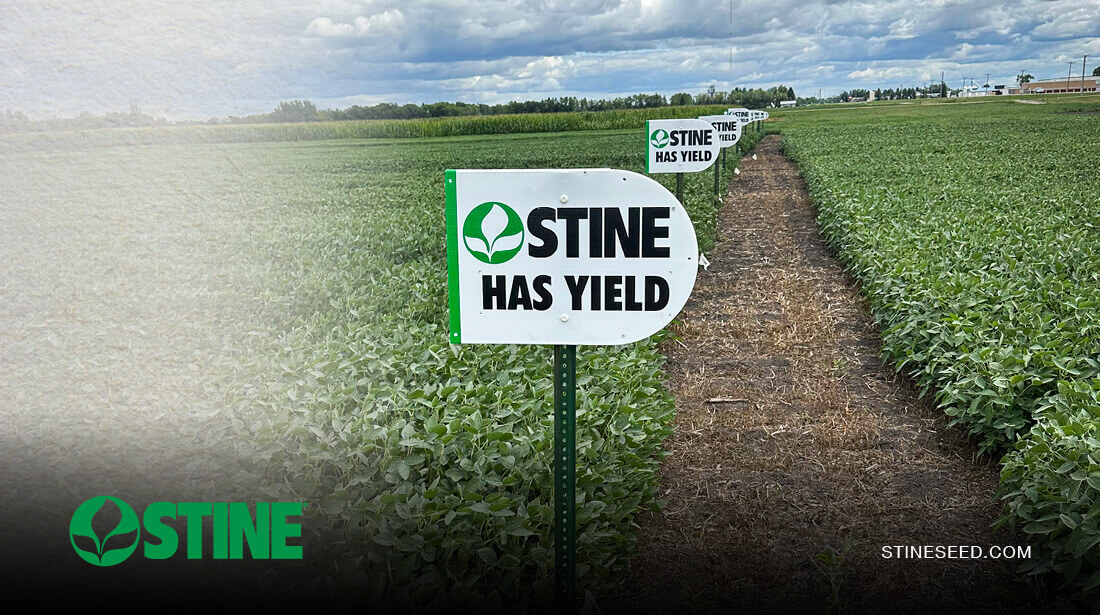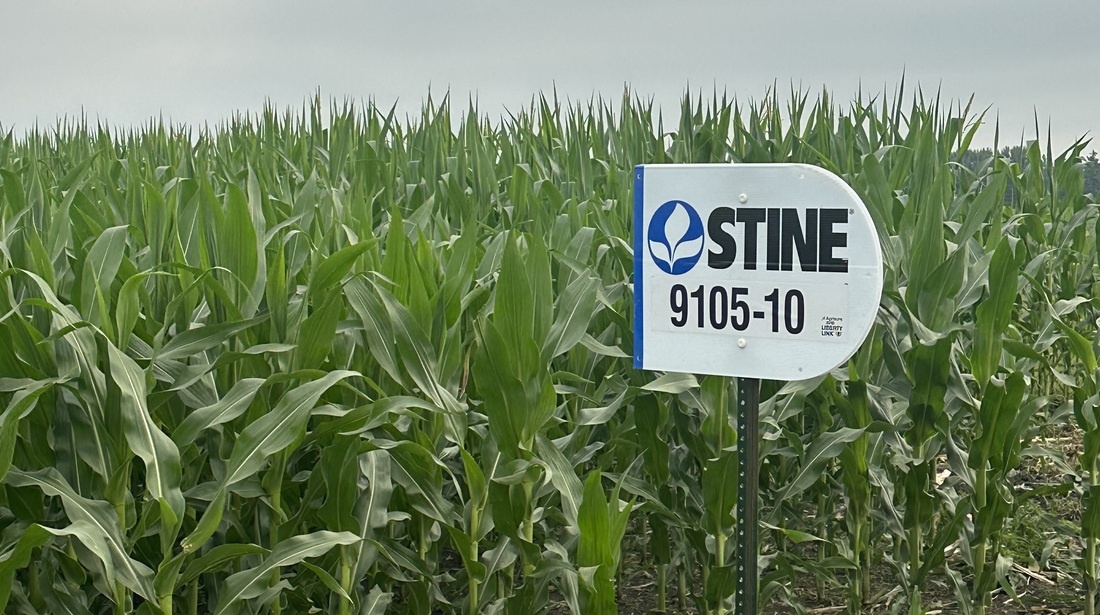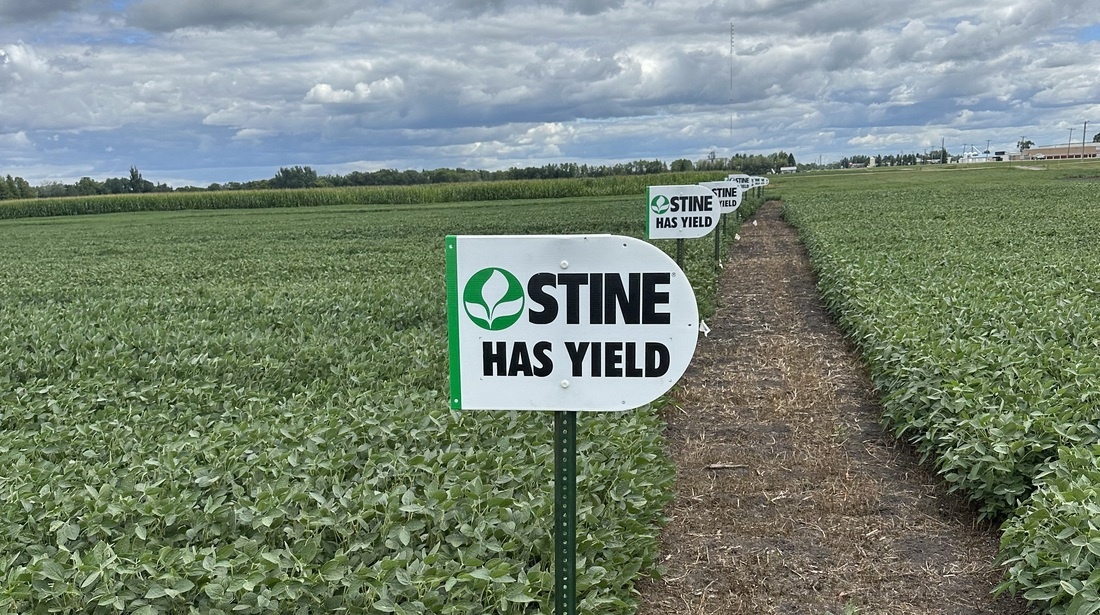According to the August 12 Crop Progress Report, most of the U.S. corn and soybean crops are progressing well. Corn is nearly fully silking at 94%, with 60% in the dough stage and 18% dented. Meanwhile, soybeans are thriving, with 91% blooming and 72% setting pods. However, despite promising yield projections, falling crop prices are a growing concern, which could significantly impact growers’ profitability this year.

“This year, many regions are on track for excellent, possibly record-breaking yields,” says Myron Stine, Stine® Seed Company president. “But with corn and soybean prices on a downward trend, the pressure is on for growers to maximize their returns. It's crucial for them to collaborate with their local Stine reps to choose products that are tailored to their specific environments, ensuring top yields without compromising profitability for the 2025 season.”
As the season progresses, our regional sales agronomists (RSAs) are in the fields, helping growers navigate these challenges and make critical agronomic decisions. Here’s a look at the crop progress from different regions, as shared by our RSAs.
Chris Maczkowicz
Region 1 (southern Minnesota)
It was a challenging spring across my region, to say the least. Planting started earlier than last year, but as we sit today, the crop is behind from last year. There’s a lot of variability in both corn and soybeans, with drowned out pockets everywhere. There is higher aphid pressure in soybeans this year, and the spraying application window is about to wrap up. Now, we just need some time and heat to finish off the crop, and, hopefully, the combine surprises us again this fall.

Katie Lorenz
Region 21 (northern North Dakota)
Across North Dakota, soybeans are in the flowering to early grain fill stages. According to historical trends, soybeans are behind. This delay has raised concerns about whether soybeans will reach maturity by the end of the season. Soybeans that are currently flowering still need to accumulate at least 900 heat units to reach maturity, which means we would need 20 more days with an average temperature of 80 degrees. The first freeze typically occurs between Sept. 20 and Oct. 10. All Stine soybeans look outstanding and have had great stands. Stine 08EC32 brand soybeans are turning heads in plots with tall, beautiful plants.
On the defensive side, growers need to be on the lookout for frogeye leaf spot and aphids in soybean fields. Frogeye leaf spot is a relatively new disease to North Dakota soybeans, found mainly in the eastern side of the state and caused by our mild winter and very wet spring. You can spot this fungal disease by the foliar lesions on the upper canopy portion of the plant.
My greatest concern for corn in the state right now is in the western and central parts of North Dakota that saw temperatures in the high 90s and low 100s while corn was tasseling (VT), silking (R1) or starting to fill grain (R2). These high temps with limited moisture will likely cost growers some yield, as corn is most susceptible to stress during that fertility window. The Red River Valley is showing off with its timely rains and dark green corn hybrids. Brace roots are strong, and healthy leaves will inevitably be followed by high yields. New Stine corn lines 9105-10 and 9214-20 are shining bright in plots, and we are excited to get these lines out in growers’ fields in the North Dakota countryside. Stine’s new corn looks promising for YIELD!
Hart Hauge
Region 28 (New York and Pennsylvania)
In New York, corn is very healthy overall. We’ve had plenty of rain to ensure good pollination. Stine 9444-22 brand corn has stood out to us all year. It was quick out of the ground and has maintained an excellent look all year long. I expect to see good yield for corn in New York this year. Soybeans were slow to start but have since filled in nicely. Yields will be variable and will come down to when the soybeans were planted. Stine 19EC12 brand soybeans continue to be a dominant performer in the area.
Areas of Pennsylvania experienced extreme heat with limited rainfall during July, but we have seen some more rain this month. A lot of corn was pollinating during this time, unfortunately, so I expect some low yields in those areas that did not receive relief during pollination. As you move east, there are areas that received adequate rain during the heat and had great pollination. I expect normal/above normal yields in these areas if we can catch a few more August rains. Soybeans have held on during the heat and look good overall in most areas. It is tough to say what we will see for yield in soybeans. If we continue to get rain here in August, growers should be happy with soybean yields.

Rob McCarter
Region 35 (southwestern South Dakota, western and central Nebraska, eastern Colorado, and western Kansas)
We have been seeing crops at various stages of development while walking fields the past couple of weeks. Planting was delayed in some areas due to wet weather patterns in the region. We have experienced several rounds of severe weather, including hail, wind and drought following a wet spring. In fields where early planting took place before wet weather patterns occurred, crops are entering the later stages of development. Some of the later planted and replant fields will require a warm and extended fall but should finish up strong.
Our new product lineup for 2025 is rising to the top. While walking through both Stine corn and soybean Product Development Plots and strip trials, we noticed the new lines continue to demonstrate Stine's commitment to higher yields and increased profitability for our growers. We look forward to a great finish to the growing season and another successful harvest.
Eric Webb
Region 38 (west-central Missouri, northeastern Kansas, southeastern Nebraska and south-central Kansas)
Things look impressive in west-central Missouri, northeastern Kansas and southeastern Nebraska up to this point. I think we will see another year of record numbers on the Missouri side. Throughout our region, we have dealt with some tar spot issues, but most of it came in early, so growers were able to use a fungicide application to help battle the issue. Otherwise, we have been healthy across the board. Stine 9728E-20 brand corn has been a huge standout in northeastern Kansas this year and is doing big things along with 9818-32. Coming off a very tough last couple of years, Kansas and south-central Nebraska are finally getting some much-deserved rains, and we have a lot of high hopes for this year’s crop. I think we will see some great yields in those parts of the region as well. Things in the southern part of our region down around the Wichita and Hutchinson, Kansas, areas are shaping up very nicely as well. However, we need some rain to help finish out the year. Again, Stine 9728 is a very big player in this part of the region and is performing well.
Soybeans across the region seem to be doing well. These nice, timely rains in August will be a huge help to finish things off. Enlist E3® soybeans with Enlist® chemicals are once again doing a good job knocking out those tough, stubborn weeds. The thing to remember to help with the pressure is to keep up on timely applications and make sure to use those full rates to stay ahead of the game. We’re really excited to see how these beans finish out the year.
We’re also very excited for harvest right around the corner and hope to see a lot of happy smiles in the combine cab this year. Bring on harvest!
For advice on best management practices this growing season or to discuss next year’s corn and soybean lineup, contact your local Stine sales rep.
Related Articles
-

Stine® to offer Syngenta’s Victrato® soybean seed treatment in 2026
December 2025 in Agronomy
-

Use Stine’s XP® seed treatments to prevent early injury to your crops
December 2025 in Agronomy
-

Understanding Stine’s enhanced oil profile soybeans
December 2025 in Agronomy
-

Soil sampling sets the stage for spring
November 2025 in Agronomy



